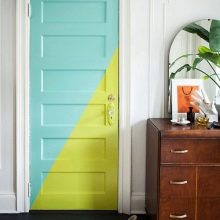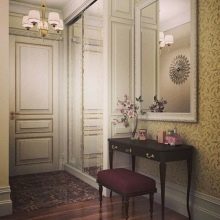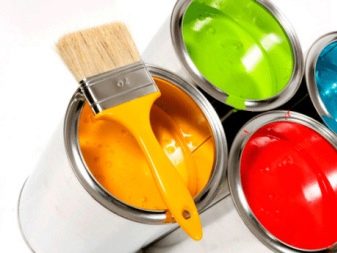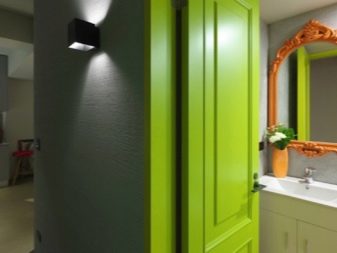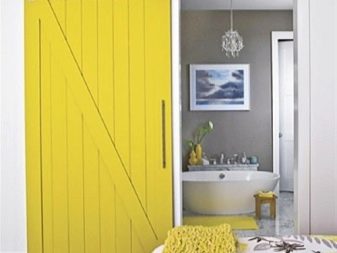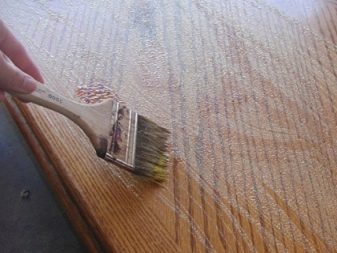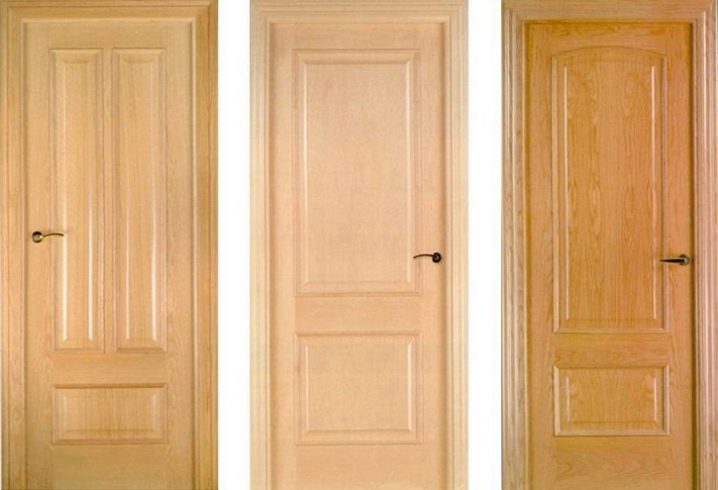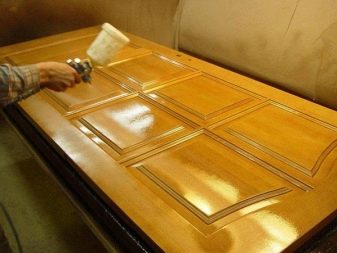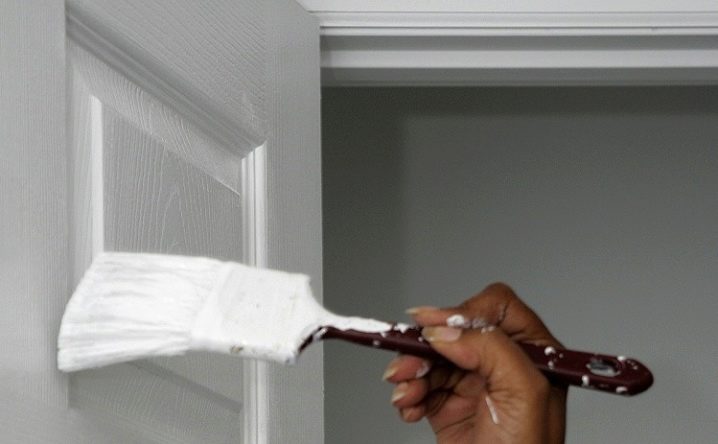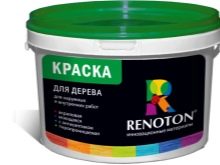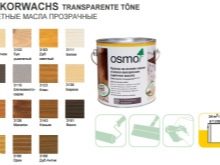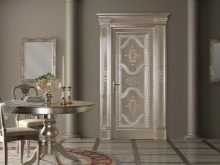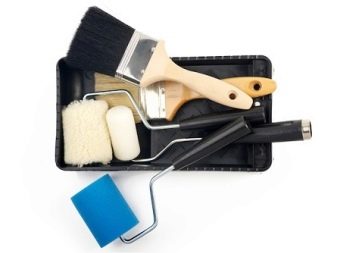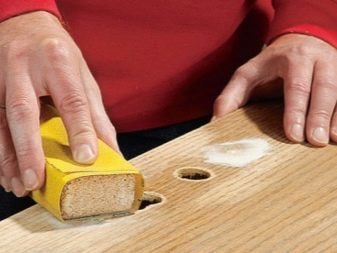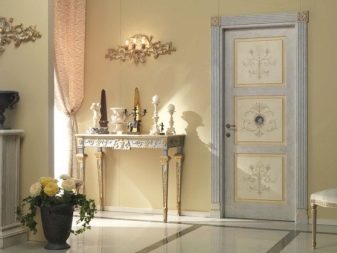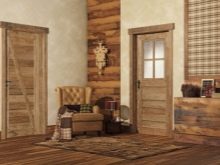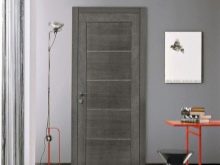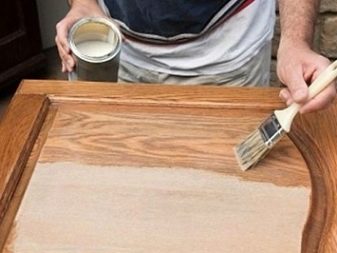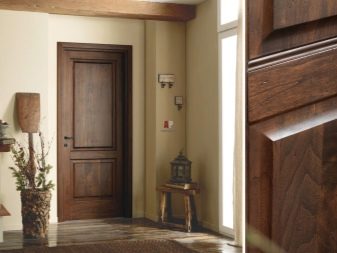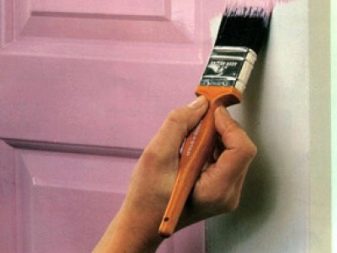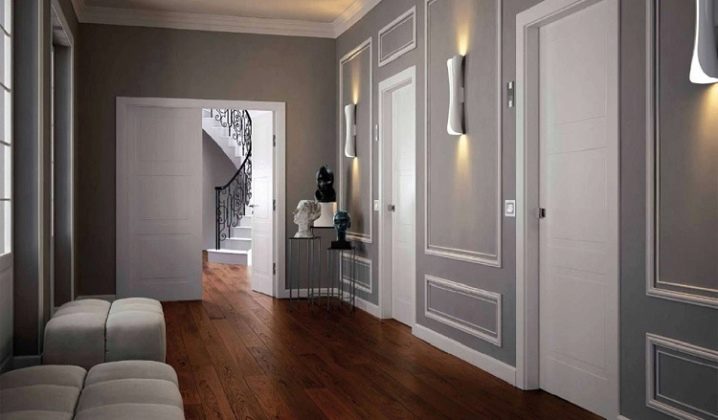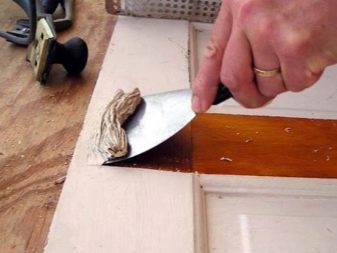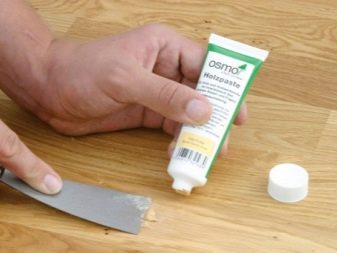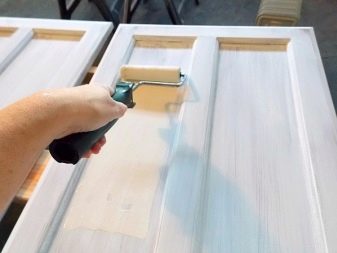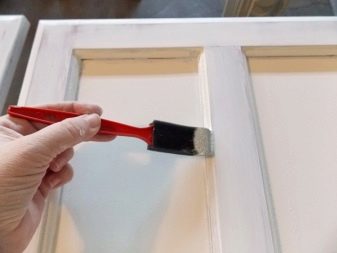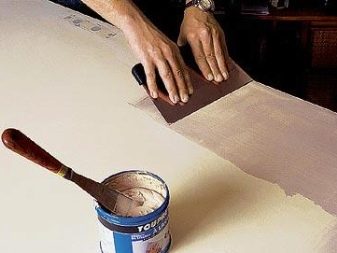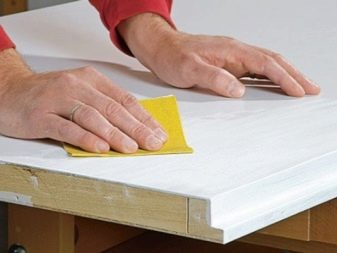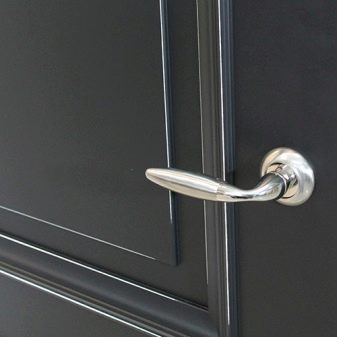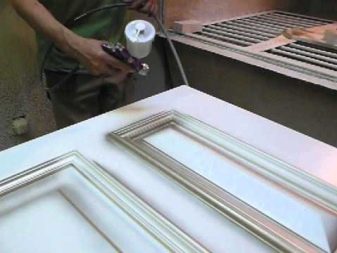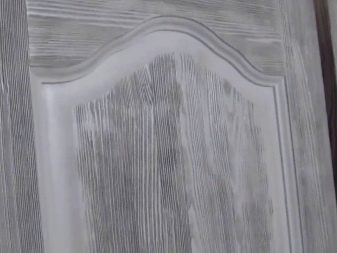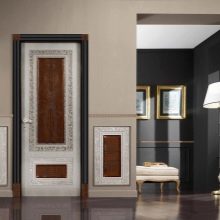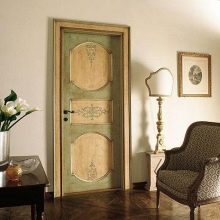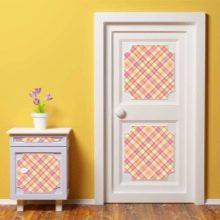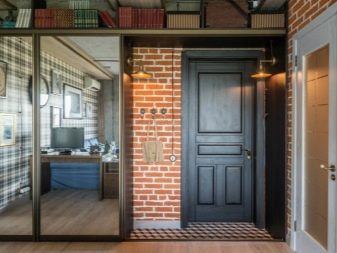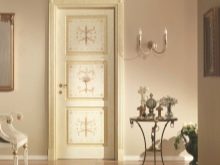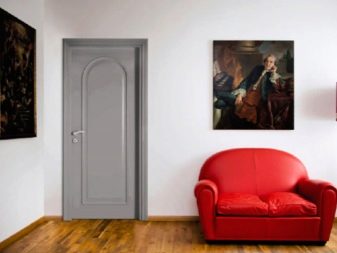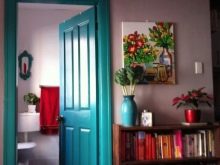How to paint the door?

Every detail is important in a harmonious interior. This applies not only furniture and decor, but also elements such as doors. Without these components no modern dwelling can exist. Door leaf should be not only functional, but also attractive in order to successfully complement the existing ensemble. Often, the owners want to update the door, but do not know how to do it. Today we will talk about how best to paint this element of the home, so that it becomes even more attractive.
Benefits
It's no secret that over time all the details in the interior wear out and gradually lose their original appearance. Better and more reliable materials age a little slower, and inexpensive and unnatural - much earlier. Noticing that the interior or entrance door to the dwelling has lost its visual appeal, many owners want to return it to its former appeal.
A good solution to this issue is the usual painting. Fortunately, modern manufacturers produce coatings that easily fall not only on wooden canvases, but also on metal or plastic surfaces, so you can find the optimal paint for any material.
However, people often turn to this renovation of the door structure not due to the fact that it has worn heavily and requires restoration, but with the aim of reviving the interior a bit and bringing fresh paint into it.
Do not underestimate the role of the door leaf and its colors in the interior, as often such elements radically change the tone of the ensemble and give it a particular style.
Paints and varnishes are good not only for decorating and renovating doors, but also for choosing shades.Today in the shops you can find a mixture of not only classic and neutral, but also the most unexpected and even acid tones. This suggests that the modern consumer is free to form absolutely any interior, from classic to insane avant-garde.
Many users prefer to paint the doors also due to the fact that everyone will be able to cope with this process. It is not too complicated and does not require special knowledge and skills. It is enough to know only the basic basics of painting door panels.
Materials Products
Almost all types of modern interior doors are suitable for painting. Ideal quality wooden or veneered canvas.
Today, the furniture market has a lot of attractive and durable models made of hardwood, which include:
- Beech. Otherwise, this breed is called the "tree of kings" because of its unsurpassed quality and good appearance.
- Oak. Oak doors can boast enviable durability, reliability and a unique shade. This is especially true of luxurious stained oak.
- Nut. This attractive wood has an interesting moire pattern and a rich dark shade.
- Ash. The strength of this material is comparable to oak, but it is much cheaper.
- Linden. This wood has a light shade and is inexpensive.
No less popular canvas from coniferous trees, such as:
- Spruce. This material is not the most durable, but it fits perfectly for an interior door.
- Pine. Cloths of pine have a nice and soothing color. In addition, these doors are inexpensive and look attractive.
- Cedar. Cedar doors are highly reliable and resistant to mold.
- Alder. Alder doors in their characteristics are in many respects similar to pine models, but are more resistant to temperature changes and exposure to moist air.
Also suitable for painting and hybrid products, which include a frame made of veneered or solid pine solid or inexpensive canvas from materials such as MDF, fiberboard or particleboard. Often such products are covered with veneer.
In addition, attractive veneer specimens can be shield or paneled.Paneled structures are ideal for installation as a traditional piece of furniture. Conventional shield options can be used a little differently.
Because of their smooth surface, they are often used to create hidden interior canvases. Otherwise, these elements are called doors "invisible."
You can paint not only wooden, but also a plastic door. But if you want to achieve the most stable and attractive results, then you will have to stock up on a special spray paint in cylinders. For example, it may be the popular compound Amphibolin 2000.
How to paint in the apartment with your own hands?
The choice of a suitable paint coating mainly depends on what appearance of the door leaf you plan to get as a result, on the experience in such matters and, of course, on the conditions in which painting will be carried out. If you are going to process the door behind the walls of the living room, then you need to choose a finish that does not smell, so as not to harm the health of the people around you.
There are several varieties of enamel paint on the market that can be used to process the door and its components:
- Acrylic. Such paint perfectly hides any defects on the painted surface. It also protects the material from dampness and moisture, and the formation of mold. It can also be used for glass. Today, many companies produce high-quality acrylic compounds that are environmentally friendly.
- Alkyd This composition is very similar to the traditional oil paint, but has more significant protective characteristics that can last up to 4 years.
- Polyurethane. This paint is highly durable and durable. It perfectly fills the pores of natural wood, which protects it from the penetration of moisture and dirt.
- Water dispersion and water emulsion. These paints are quick-drying and do not contain substances harmful to health. In addition, they do not emit a sharp odor and they are durable.
- Powder and hammer. These options appeared on the market relatively recently. They are not designed for wood finishing. As a rule, they are covered with metal sheets.
- Wax and oil. These specific coatings are often purchased for wood finishing. They allow the material to "breathe" and have a restoration effect on damaged surfaces.However, wax coatings are not quick-drying, so it will be possible to use the treated door only after 3-4 days.
For fashionable patinating these days, use the following compounds:
- Acrylic paint, represented by a wide range of colors.
- Bituminous, giving a dark brown shade.
- Wax patina, which can have both natural and green-blue tones.
- Shellac patina presented in colors from golden to red.
- Oil patina, used very rarely in modern interiors.
Required tools
For painting the door leaf, you must have the following materials and objects:
- "Goats" or other similar structures for laying the door in a suspended position;
- tassel;
- dry brush;
- small roller;
- special paint tray;
- hammer;
- screwdriver;
- sandpaper;
- spray gun;
- Craquelure for door decoration.
How to choose a color?
Modern manufacturers produce paint coatings in a variety of colors. Thanks to such a rich assortment, homeowners will be able to easily implement even the most non-trivial design ideas.
Nowadays there are several leading painting trends for interior doors:
- soft and gentle shades, light notes of blue, peach, grassy, pink or lavender color;
- dark dense shades of brown, cherry, blue and chocolate;
- saturated and rich colors (red, orange and yellow);
- noble tones imitating natural wood like wenge, oak, walnut or cedar.
In addition, many designers, when choosing the right color, recommend that owners adhere to the following guidelines.
- Deep and dark shades such as cherry, red walnut or dark chocolate will bring luxurious and elegant notes into the living room interior.
- As for low-key light colors, they are best suited for cozy bedrooms or children's rooms, as they create a soothing and calm atmosphere.
- If the room is a beautiful bedroom set of white hue, then the door is better to pick up in a similar color scheme. It can also be supplemented with gold-plated panels.
- In a wooden house will look perfect linen from the array, treated with oil transparent impregnation.
- For a classic ensemble with antique interior items, you can purchase an interesting artificially aged wooden model.
- As for the door frame, it should be slightly lighter or darker than the main wall finish.
Technology painting new canvases
Untreated wood intensively absorbs moisture. If, for example, to put such a cloth in a bath, without having treated it with special impregnations, then it will soon swell and simply cease to close securely. This suggests that before the direct installation and painting of a wooden door you need to correctly prepare it.
All work must be carried out indoors so that dust and dirt does not fall on the treated canvas.
First, the door without any fittings is laid on a flat and stable plane. As a rule, at the production stage, the webs are pre-polished, but often they still have minor roughness or protrusions, so you should again go through a grinding machine or emery paper.
Before painting the canvas must be treated with a primer.First, all the grooves of the canvas are covered with it, and then smooth surfaces.
Since the structures will be in a horizontal position, no drips and drops will appear on them, and the primer will be absorbed as evenly as possible. After that, you need to give the product to dry completely and make a second treatment.
Now you can go directly to painting the canvas. Shield models are best covered with a roller, and paneled ones with a narrow brush. Make sure the paint is not too thick. If its consistency is such, then it should be diluted with a solvent.
You should not make out the door is too thick a layer of paint, as from such actions the product can only deteriorate. Depending on the covering characteristics may require 2-4 coats of paint. Keep in mind that each of them must dry out completely before applying the next. While the door leaf itself dries out, you need to process the opening.
If a wood stain is chosen for the finishing of a new canvas, then it is not necessary to use a primer.
Cardinal color change
It is possible to repaint a previously primed and painted door on your own at home.First you need to carry out all the necessary training. First of all, the old paint layer is removed. With the complete removal of the previous layers, the door will be repainted in any color, be it classic brown, white or black, as well as brighter and more colorful tones. However, in the second case, you should check how appropriate the paint will look in the room. To do this, apply it to a couple of boards and attach it to the door leaf.
After these procedures, you can begin to repaint the door according to the algorithm:
- Canvas need to putty. You can purchase a special composition for wooden doors.
- Then the putty is dried.
- After that, you need to process the surface with sandpaper.
- Now apply a layer of primer, oil or wax (you can pick up fireproof materials).
- Paint the doors you need from the top corner.
- Small elements painted with a brush.
- Paint should be applied exclusively in the direction of wood fibers.
Now you need to give the canvas to dry completely. It is desirable that it be in a horizontal position.
How to remove the old paint?
To soften the previous layers of paint, you can apply a wash chemical layer and allow it to soak into the surface. This work may take about 2 hours. After some time, the old paint will begin to bubble and move away from the door. It can be qualitatively removed with a spatula until the cloth is completely cleaned.
Also, to remove the old paint, it can be heated with a building dryer and removed with a spatula. As long as the finish is well warmed, it remains as soft as possible and it is much easier to remove it.
You can use both of these methods. Especially often this method is used to clean the oil paint applied in many layers.
It is possible to degrease a wooden door with a metal brush and emery of a small or large fraction. In particularly difficult cases, use a plane or aggressive chemical compounds. Plastic models are degreased with acetone and white spirit.
How fast to putty?
Putty is the final stage of preparing the door for painting and does not take much time. Depending on the condition of the canvas, it can be puttied in whole or in part. After that, you need to wait until the composition is completely dry and you should walk on the door with emery paper (all over the surface or in separate areas).There is no need to rush in order not to harm the canvas.
Two-color staining
If you want to paint the door using two different colors, for example, in contrasting black and white, you must first apply a base coat. In this case, white. After that, you should wait for its complete drying and treat those areas that will be painted in a different shade. Also in the course of work, you can glue certain surfaces with adhesive tape to prevent paint of a different color from getting on them.
After drying and processing the base layer, you can re-stick the tape onto it and start painting the previously closed areas in black.
We make the door to the old
If you like vintage style and antique look, you can decorate the door with a patina.
This procedure occurs in several stages:
- first, the surface of the door is treated with an iron brush;
- then apply a white primer;
- after it dries, a gray patina is applied;
- its top layer will need to be removed using a grinding block;
- at the end you need to apply at least two layers of enamel.
Exclusive decor
Various elements can be used to decorate a repainted door, for example:
- patterned compositions, applied using stencils;
- You can add dermantin, leather or woven lining;
- baguettes;
- aged craquelure;
- patina;
- metal or glass inserts.
Original room interior design options
Doors in the interior of the loft style can be painted in both pastel and dark shades. Deaf black canvases in such ensembles will also look good, especially if they are installed against the background of a laminate of neutral color and walls decorated with decorative bricks.
Doors in Provence style should not be too dark and gloomy. On such canvases, it would be best to look milky, beige, cream or ivory tint. Such designs should overlap with the soft and gentle colors of the good-natured Provencal style.
Doors in classic ensembles can also be painted in dark or light colors. The main thing is to rely on the basic palette of the interior. For example, in a room with soft peach walls, a milky-colored door, decorated with stencil patterns of orange color, will look organically. In the more muted settings made in chocolate or caramel tones, the doors painted in dense dark brown shades will look organically.
Fans of bright solutions can paint the doors in the room in the most unexpected and juicy tones. For example, in a room with muted blue-gray walls and dark brown floors, the yellow door will assume the role of a bright accent.
However, colors do not necessarily have to visually contrast with each other to create an original and fresh ensemble. So, a simple wooden door painted in rich blue color will look and attractive in a room with dim blue walls and dark blue curtains. In such conditions, a bright door will revive the entire ensemble and will be organically stand out against its background.
In neutral gray you can repaint the door, located in a bright room with bright furniture. For example, it may have white walls, a floor that is lined with brown laminate, and a red leather soft corner. It is not recommended to install similar canvases in interiors of the same color.
Blue door leaves will also look spectacular in the snow-white rooms. Especially appropriate is a combination in a nautical style. If you complete the space with a striped chair and decorative elements in the form of ships and “treasure cards”, the ensemble will be very interesting and original.
In a room with coffee-colored walls and a dark floor, you can install a high wooden door, painted and thick turquoise. Such a colorful combination will look unusual and cozy.
Virtually any interior will look organically canvas coated with white paint. This can be both dark and snow-white room. In the second case, it is possible to avoid merging the web with the decoration with the help of an accent wall.
In this video you will find a step by step instructions for painting the door.


